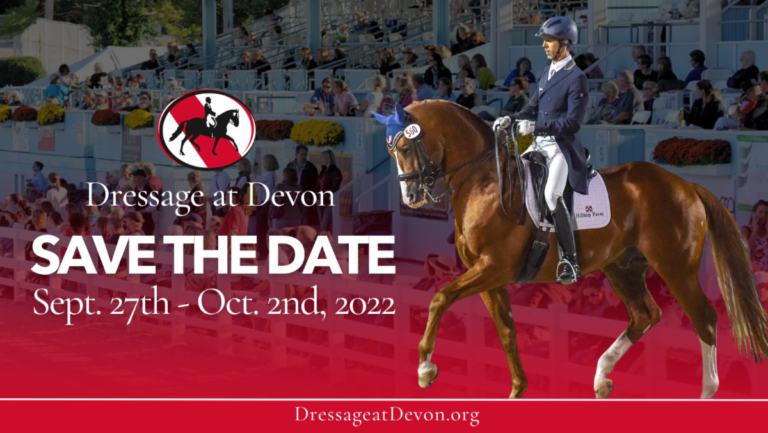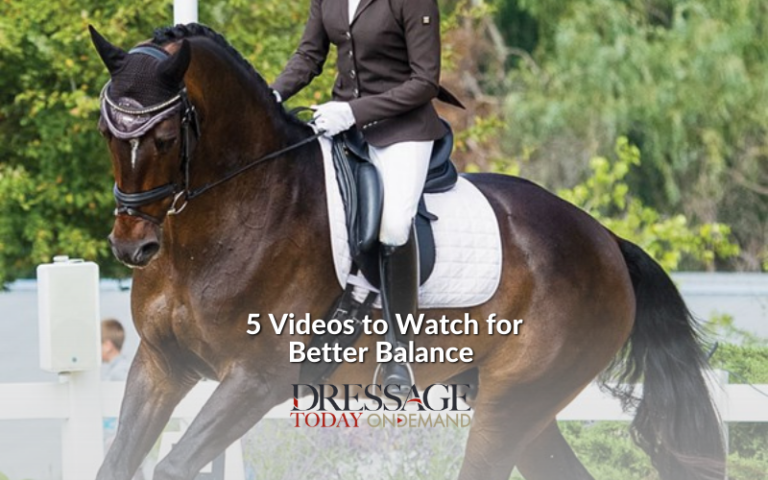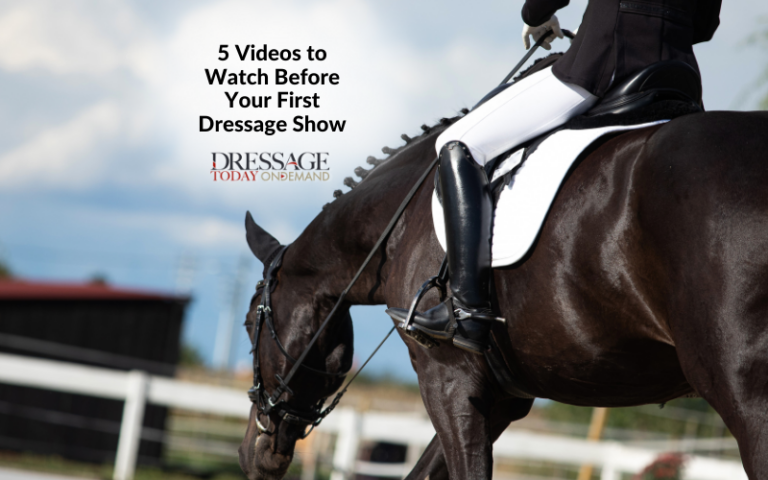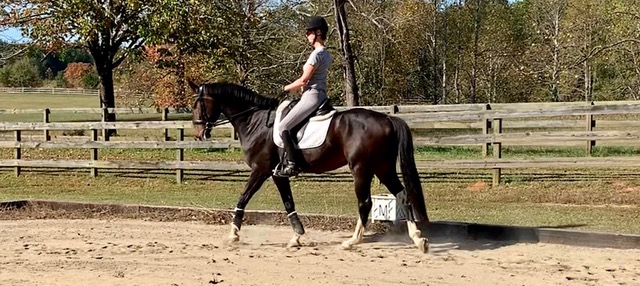The last couple weeks have consisted of many long days but the good news was we have experienced almost a month of an Indian Summer and there was much pleasant riding to be done.
I had mentioned earlier that a “German” seat was the most important information I have gained here, and the more I use it, the better I am at articulating what I actually had to do to achieve it. There are many aspects at work, but the first part, which I mentioned before, is finding a more open hip angle. To achieve this, the rider cannot lean back with the upper body or swing the leg back. Instead, the position is more about tipping the pelvis slightly back so it is in a “neutral” position, but still with contact from the pubic bone to the saddle. My trainer — Judy Allmeling — and I did a “Tips from Trainers Who Teach” article with more details about this in a recent Dressage Today issue (Oct. 2016).
The next piece of education was to learn to use the leg more effectively in what I would consider a lateral way. In other words, the leg has to be wrapped around the horse’s barrel and by applying pressure either from the thigh, knee, calf or heel to make an adjustment in the horse’s rib cage and hind end. We all know this, but the reason I mention this is because this use of the leg is being actively adjusted almost all the time. Not to say that you are squeezing or kicking all the time, the leg is quiet and soft, but like the connection from the rein, the connection with the leg is never static and always a living and breathing part of the ride. That is how one uses more leg aids than rein aids and achieves what we have all heard a million times: ride the horse back to front. Of course learning to keep the hip angle open and the seat muscles following and soft while using the leg is integral here.
The final tip that made my seat more effective involves how I use my core laterally. I worked on keeping my shoulders parallel to the horse’s shoulders and my hips parallel to the horse’s hips. In other words, I let my inside shoulder back a little and open my chest in that direction when the horse is bent to the inside. This allowed me to find the inside seat bone more effectively because when the inside shoulder comes back, even slightly, the inside seat bone is in a position to stay slightly forward and that small change in weight helps the horse balance himself over the inside hind leg and therefore carry his and the rider’s weight with better balance within the bend. When I am aware of these lateral changes, as slight as they are, I feel a stretch across the front of my body and I am much more effective and strong in my position. Plus, the horse’s balance is improved before I even think about applying the half halt.
I hope this helps you all with your own riding! I know it is the short version of an intricate topic, but feel free to respond with any questions!











